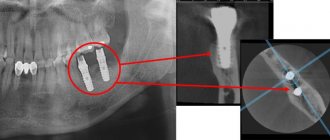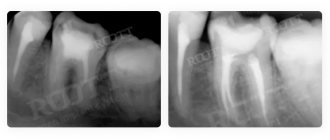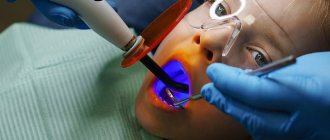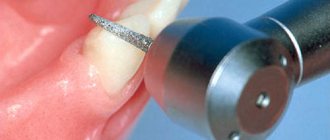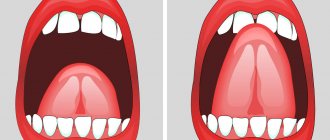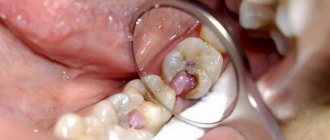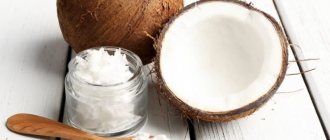- What is tartar
- How is tartar formed?
- Types of Tartar
- Symptoms and consequences of tartar
- How to prevent tartar formation
- Methods for removing tartar
- How is tartar removal performed?
- Removing tartar at home
- Side effects from scaling
- Proper brushing of teeth
- Prices for tartar removal in Moscow
What is tartar and what is the cause of the disease. What methods will help eliminate this aesthetic problem. Is it possible to remove formations without resorting to the help of a dentist?
What is tartar
Tartar is a formation that is a keratinized plaque consisting of poorly removed food debris, calcium, phosphorus and iron salts covered with a biofilm of dead bacteria.
You can find fossilized food deposits over the entire surface of the dentition, but most often the concentration is on the lower incisors, closer to the gums and on the sides.
Please note that tartar can penetrate the back wall and inside the gums. It is usually found in hard-to-reach places where it is impossible to remove food debris with a toothbrush.
How is tartar formed?
Food particles attach to tooth enamel. Most often from soft and sticky foods, such as flour products.
Under the influence of saliva, a film of glycoproteins is formed; if you do not rinse or brush your teeth, then after 4 hours streptococci bacteria come into play, and actinomycetes join them. After 2 days, streptococci decrease, but the number of anaerobic bacteria increases. After 7 days, spirochetes and motile rods appear.
Remains of food and the bacteria that multiply on them are gradually covered with a film of saliva, smoothed out and hardened. Tartar grows because new layers are added to existing particles.
Fermentation and metabolism processes occur under dental plaque, during which acids are formed. They weaken tooth enamel so that tooth decay can develop over time.
Tartar can also cause bad breath.
Plaque can eventually turn into tartar through mineralization—minerals from saliva are deposited in plaque and make it very hard.
This is how complications arise; as a result of a neglected condition, you can lose a healthy tooth, but ringed with plaque.
The rate of mineralization varies from person to person. It all depends on the following factors:
- the amount of saliva produced;
- its composition and activity of secretions;
- quality of oral hygiene;
- nutritional characteristics;
- violation of salt exchange in the body;
- wearing dental structures (prostheses);
The predominance of solid foods (raw vegetables) significantly reduces the development of plaque. The products act as a cleaning agent, helping to remove dirt from the enamel. Chewing for a long time releases more saliva, which has an antibacterial effect.
What oil to rinse your mouth with?
In traditional Ayurveda, sesame is used, this is an oil of oils according to ancient Indian teachings. Cold-pressed coconut has no less powerful properties, the positive effects of which have been repeatedly confirmed by scientists. You can use other herbal options. When wondering what oil you should rinse your mouth with in the morning, rely on personal preferences, while fulfilling the main condition: the product must be unrefined and preferably organic.
Rinse your mouth with sesame oil
Sesame oil has been used as a mouthwash for centuries. Its composition is rich in microelements and polyunsaturated fatty acids, and also contains a large amount of lipids, which can effectively destroy bacteria and restore natural whiteness to teeth. Pulling with this oil also helps prevent tooth decay and strengthen tooth enamel.
Coconut Oil Mouth Rinsing
Over the past few years, coconut pulp oil has gained incredible popularity in cosmetology and is actively used in oil pulling. Half of its composition is lauric acid. It has strong anti-inflammatory and antimicrobial properties, kills bacteria, viruses and yeast infections, and protects teeth from tooth decay. Also, coconut oil, unlike other oils, does not stain teeth or dull the sense of taste when used regularly.
Gargling with flaxseed oil
Flaxseed oil is widely known for its medicinal properties. Flax seeds contain vegetable fats and omega acids, protein, as well as many vitamins and biologically active substances. Oil pulling with this type of oil allows you to get rid of the problem of bleeding gums, strengthen the enamel and whiten your teeth. Rinsing your mouth with flaxseed oil is not recommended for children under three years of age, pregnant women and people with biliary tract diseases.
Rinsing your mouth with sunflower oil: benefits and harms
Sunflower oil often plays the role of a democratic alternative to sesame and coconut oils. Its composition is rich in vitamin E and contains linoleic acid, which is responsible for the structure and normal functioning of cells and tissues of the body. The answer to the question of why you should rinse your mouth with sunflower oil will be its exceptional ability to draw out toxins, eliminate bad breath and get rid of yellowish plaque. The disadvantages of this oil include the high content of Omega-6 fatty acids, which can cause inflammatory processes in the oral cavity.
Gargling with essential oils
As a supplement to the main oil, you can use a few drops of some essential oil intended for internal use. To enhance the antibacterial effect, tea tree, oregano or mint oils are perfect. Black cumin oil, which has anti-inflammatory and analgesic properties, will add accompanying healing properties to the procedure.
The dilemma remains unresolved whether it is possible to rinse your mouth with mustard oil. Although mustard seed oil protects against infections and has a teeth whitening effect, it is also one of the most poisonous essential oils and can cause inflammation of the digestive system and kidneys if ingested.
Types of Tartar
Fossils on enamel come in different types depending on location. So they distinguish:
- supragingival stones – formed on the first molars (lateral) and front or lower teeth;
- subgingival - hard areas that penetrate soft tissue;
- stone bridge – covering the main and adjacent teeth.
Symptoms and consequences of tartar
Patients experience the following symptoms:
- bad breath;
- bleeding gums;
- caries;
- purulent discharge;
- gingivitis;
- pulpitis;
- periodontitis – inflammation of tissue areas near the root of the tooth;
- mobility and tooth loss.
Gingivitis
The initial form of gum disease.
If left untreated, gingivitis can develop into periodontitis, which is a serious, irreversible gum disease and the most common cause of tooth loss in adults.
The main 4 signs of gingivitis:
- Bleeding gums. Healthy gums do not bleed. If blood comes out when using a toothbrush or floss, this may indicate the onset of gingivitis. Even if it happens from time to time. The symptom should not be ignored as it may be a sign of the onset of gum disease.
- Unpleasant smell. There are many reasons for a bad odor: specific foods, poor hygiene, but it can also be the first sign of gingivitis. This is due to the fact that the bacteria that cause gum disease produce an unpleasant odor by breaking down food particles in the mouth.
- Swollen gums. They are usually pink and firm. Redness and swelling may indicate the onset of the disease.
- Receding gums. They begin to separate, and the root of the tooth is exposed, the incisors appear longer. Increased sensitivity is another sign.
A common cause of toothache is inflammation of the dental nerve, called pulpitis. Anyone suffering from this should seek help from a dentist as soon as possible.
Pulpitis
In acute pulpitis, pain usually occurs spontaneously. The pain may be constant or occur periodically. In rare cases, the inflammatory process is completely painless.
If the affected tooth is sensitive to pressure and impact, this is a sign of a dead dental nerve. It hurts when you touch the tongue, but especially when you squeeze it. The pain is often worse at night, as the warmth of the bed increases the inflammatory process. If left untreated, bacteria from the medullary cavity of the tooth can penetrate through the hole at the root tip into the surrounding bone and soft tissue. Accordingly, inflammation spreads, the cheek and lymph nodes swell.
Periodontitis
Periodontal disease is defined as chronic inflammatory disease of the gums. It is mainly caused by bacterial plaque (biofilm, plaque), especially in old age.
As a result of inflammation, your teeth may hurt and your gums may bleed more easily. If left untreated, periodontitis can also lead to tooth loss.
Patients with periodontitis usually show few symptoms at first. However, some signs may indicate the disease:
- bleeding gums;
- red and swollen gums;
- Gum recession;
- open and sensitive necks of teeth;
- putrid odor from the mouth;
- unpleasant taste, especially when pus leaks from the inflamed areas;
- The spaces between the teeth widen;
- loose teeth, misaligned teeth.
BENEFITS OF GANDUSHA
Up to 700-700 species of various microorganisms live in our oral cavity, and their total number is a multi-million army. Naturally, many of them are useful. Their main task is to facilitate the absorption of food. However, there are also a lot of pathogenic microorganisms. For example, streptococcus mutans and candida fungus, which provoke caries and gum inflammation.
However, the harm from them is not limited to these diseases. When our body's immune system is weakened, the action of pathogens quickly spreads far beyond the oral cavity and causes serious internal inflammation. Disturbs the functioning of the heart, brain and other organs.
Teeth and gums.
When eating food, some particles remain between the teeth and on the gums, which can later lead to dental diseases. Oil pulling helps maintain normal pH balance and microflora of the oral cavity, resist microbes, and also helps strengthen gums and tooth enamel and improve blood circulation in the tissues of the oral cavity.
Recent research has confirmed that oil pulling can combat a bacteria called Streptococcus mutans, a leading cause of tooth decay, and relieve bad breath. Other benefits include naturally whitening teeth, strengthening gums, reducing overall inflammation in the body, and relieving over 30 different diseases and health problems.
How it works?
Most of the microorganisms that inhabit our oral cavity are single-celled and covered with a lipid (fat) membrane. When bacteria come into contact with oil (also fat), they are attracted to it like a magnet. Toxins are a fat-soluble substance and, accordingly, have the ability to dissolve in fat.
Sinuses.
Sinuses can become clogged easily, especially in those who are sensitive to dust and pollen. Oil pulling helps strengthen the sinuses and allows the sinuses to remain free of mucus.
Fresh breath.
Breathing is an essential part of life, and who doesn't love to take a nice deep breath when faced with a stressful situation? Regular practice of gandushi not only freshens the breath, but also reduces the dryness of the mucous membranes, making breathing even easier.
Joints.
Regular practice of using the oil can help keep your body flexible. Dentists say that the condition of your teeth indicates the condition of your bones. Oil pulling helps hydrate your teeth, which in turn helps hydrate your entire body.
Jaw muscles.
Oil pulling helps provide a gentle yet effective workout for the neck, upper and lower jaw muscles. In addition, the relaxing effect of the oil, which is absorbed through the inner surface of the mouth, helps to relax the jaw and neck and prevents excessive dryness.
Detoxification.
Gandusha provides the body's natural ability to remove toxins and prevents the formation of plaque on the tongue.
Digestion.
Oil pulling helps improve digestion because the gastrointestinal tract begins in the mouth.
Other
Besides cleansing and freshening your breath, the practice of oil pulling is a wonderful addition to your daily routine! The daily aspect of this procedure is not only beneficial for oral hygiene, but also for adding a sense of balance and harmony to your daily life.
Benefits of oil pulling also include: - General strengthening of teeth, gums and jaws. - Prevention of gum and mouth diseases such as cavities and gingivitis. - Prevention of general tooth decay. - Prevention of bad breath. - Potential holistic remedy for bleeding gums. - Prevention of dryness. lips, mouth and throat.
Ayurveda traditionally recommends the use of sesame oil to maintain healthy teeth and bones. In addition to sesame oil, you can use other types of oil for gandushi - olive, coconut or sunflower, and also add various essential oils and herbs to the base oil (Ayurvedic mixture of triphalu-amalaki, bibhitaki, haritaki, guduchi, fennel, cardamom).
In India, the number one oil for gargling is sesame. However, you can use both sunflower and coconut. The latter is supported by the high content of lauric acid, which has a strong anti-inflammatory and antimicrobial effect. The main thing to remember is that the oil must be organic, unrefined and cold-pressed.
WHEN TO START?
You can begin to practice the Ayurvedic gandusha procedure from childhood, while reducing the amount of oil from ½ to 1 teaspoon. The child should be pleased to perform this procedure; try to do it in a playful way.
The presence of fillings or crowns in the mouth can in no way be an obstacle to trying oil pulling, since gandush helps remove toxins, bacteria, various types of mucus and plaque, and in no way can destroy composite dental materials.
The best time to carry out this procedure is in the morning, but you can do it at any other time convenient for you, or immediately before meals. Within a week, you will notice that your tongue and mouth have become cleaner, and your breath has become fresher, and in a month, your gums will become stronger and healthier.
How to prevent tartar formation
By observing good oral hygiene, you can prevent the (re)formation of tartar:
- Brush your teeth thoroughly at least twice a day using a good manual or electric toothbrush and fluoridated toothpaste.
- Clean between teeth once a day using dental floss or interdental brushes.
- With these measures it is possible to prevent the formation of plaque and therefore tartar, as well as to prevent tooth discoloration and decay.
What does Ayurveda offer?
Oil pulling your mouth produces several simultaneous results.
1. There is a general detox of the body
The oil “captures” pathogens when rinsing the mouth and removes them when spitting. Thus, toxins cannot penetrate the oral cavity and penetrate into our body. Modern research has confirmed this property of the ancient procedure.
2. Improved dental health
Scientists have found that oil pulling reduces the formation of plaque, and removing “bad” bacteria from the surface of teeth prevents the development of caries.
3. Gums are strengthened
Some types of oil, in addition to removing pathogenic bacteria, heal inflammation. As a result, a natural barrier is formed on the gums, which prevents toxins from entering the circulatory system.
4. Reduces nasal congestion and cough
The cause of nasal congestion can be either a viral infection or an allergy to food, pollen, etc. According to holistic doctors, the patient feels relief after the first rinse - the nasal passages open and the cough softens.
5. Skin cleanses
By promptly removing pathogenic bacteria and toxins, oil rinses help reduce allergic rashes and psoriasis.
Methods for removing tartar
- Physical method. Consists of mechanical destruction of deposits using a dental instrument with a thin tip. Modern medicine uses the Air flow system. Fine particles of soda are applied under high pressure, causing a stream of air containing the powder to knock the fossils off the tooth. A subsequent stream of water washes away the separated particles.
- Chemical method. Allows you to remove formations with the help of compounds that dissolve the basis of tartar - deposits of mineral salts. A composition is applied to the teeth that softens plaque, but does not cause significant harm to the enamel. Then the impurities are removed.
- Ultrasound. Ultrasonic waves do not injure teeth and gums. Contraindicated in patients using a pacemaker.
- Laser. The laser method can be used specifically in dentistry for various procedures. It is one of the most effective and expensive procedures. The laser beam is very thin and can be used precisely. This way, only truly unwanted tissue is destroyed. Healthy tissues are preserved. Local anesthesia is often not required. Laser treatment does not cause noise or vibration like drilling. The virtually painless treatment is especially suitable for anxious patients.
How is tartar removal performed?
At the first stage, the presence or absence of allergies in the patient to drugs will be determined.
Then the degree of sensitivity of the teeth is determined, and an anesthetic is applied as necessary.
The method by which the procedure will be carried out is selected.
For rough tartar removal, an ultrasonic scaler is often used first. This is followed by processing with special hand tools to remove stubborn dirt.
The enamel is cleaned of residual particles of contamination and the doctor begins to polish the teeth so that the surface is completely smooth.
Small irregularities and areas of rougher texture on the teeth are also smoothed out, providing protection against further plaque buildup.
The enamel of the teeth is coated with varnish.
After the work has been done, the dentist will advise how often you should plan to remove tartar.
It should be noted that professional cleaning is only intended to be an addition to daily thorough oral hygiene and should in no way be considered a replacement for brushing your teeth twice daily with fluoride toothpaste.
How to properly rinse your mouth with oil
Take one tablespoon of oil into your mouth. If using coconut, leave it at room temperature for 15-20 minutes beforehand to soften it. Rinse your mouth for 15-20 minutes, no more.
Do not swallow the oil under any circumstances.
Mixing with saliva and absorbing bacteria, it becomes thinner and larger in area, acquiring a milky tint and toxicity. After rinsing, spit the used oil into the trash, rinse your mouth with warm water and brush your teeth as usual. Don't wash oil down the sink. Once frozen, it can clog the drain pipe.
Oil pulling is done strictly on an empty stomach. If holding oil in your mouth is unpleasant for you, try to distract yourself: take a shower, make a to-do list for the day, read your favorite book. If necessary, reduce the procedure time to five minutes and keep your head down so that the oil does not get into the back of your throat and cause a gag reflex. Gradually increase the rinsing time.
It is better to practice rinsing with vegetable oil every day, but three to four times a week will be enough. It is important not to neglect daily brushing of teeth: oil pulling does not replace it.
Removing tartar at home
Home remedies for tartar can be useful for removing soft plaque without the help of a dentist.
If there is already a hard coating, then you should definitely seek treatment from a specialist. Trying to pick out deposits on your own will not work. As a result, the enamel will only be damaged. It cannot be restored.
- Vinegar and lemon. The acid contained in vinegar and lemon acts against tartar. However, the taste is unpleasant, and the acid has an aggressive effect on tooth enamel. These home remedies should be used no more than once a month.
- Baking powder. The crystals found in baking powder and baking soda act like sandpaper and remove unwanted coating. Dip your fingertip in baking soda and vigorously rub the affected areas. However, the powder can potentially damage healthy gums and tooth enamel.
- Tea tree oil. Rinse your teeth thoroughly with a solution of 1-2 drops in a glass of warm water.
- Xylitol. Xylitol is a sugar substitute and, as an ingredient in chewing gum, can support oral hygiene. Research shows that xylitol is beneficial for dental health.
- Tincture of myrrh. Has a preventive effect. Brush sensitive areas along the gum line to reduce acid buildup. The liquid is also used for gum inflammation caused by tartar or its removal.
- Coconut oil and olive oil. Take one or two tablespoons of natural oil into your mouth and thoroughly rub the liquid between your teeth for several minutes. You must be careful not to swallow it and then rinse your mouth thoroughly with clean water.
- Sesame seeds. Chewing sesame seeds vigorously provides the body with healthy fats and also helps against the formation of tartar. Apply the well-fertilized seed paste several times to the affected areas of the teeth, using your tongue as a tool to create the necessary friction for grinding.
- Celandine. A good remedy not only for skin diseases, but also helps cleanse teeth of plaque. Prepare a decoction and rinse your mouth without swallowing. The plant contains toxins that can harm the stomach.
- A mixture of lemon juice and black radish. Suitable for treatment and preventive measures. Apply to teeth, then rinse with warm water. You cannot clean with a brush after acidic juice, because it softens not only the stones, but also the enamel. You need to wait 30 minutes.
- Decoction of burdock and green beans. Burdock can be picked locally or purchased dry crushed leaves at the pharmacy. The combination of these plants will help soften the stratum corneum.
- Dental floss. You can use it to thoroughly and permanently clean hard-to-reach spaces between teeth.
Oil Pulling: Precautions
- Do not swallow the oil, as it contains bacteria and other toxins collected from your mouth.
- There are some problems with dental fillings or crowns. Although there are no studies showing loosening of dental fillings or crowns with oil pulling, it is best to err on the side of caution. Consult your dentist and do as directed.
- Do not use an oil to which you are sensitive. People with tree nut allergies may have problems using coconut oil. Choose wisely.
But how do you choose? We've already talked a little about this. Let's dive a little deeper into the best oils you can use for oil pulling.
Side effects from scaling
These effects can appear after professional removal and when using folk remedies.
- Uncomfortable sensitivity from ultrasound: Some patients are sensitive to pain from ultrasound because the dental nerve or gums may be irritated. In addition, some people are bothered by accompanying sounds.
- Temperature Sensitivity: Once plaque is removed, teeth may be more sensitive to stimuli such as cold or heat. This is because tartar protects the tooth from these irritants. After removal, he first needs to get used to the intensity of the stimuli.
- Loose teeth: If you begin to notice loose teeth after tartar removal, especially the incisors, this may be a sign of periodontitis, which was previously unrecognized because the tartar was holding the teeth together. Depending on the severity of periodontitis, the dentist treats the bacterial infection of the periodontium with medications.
Fir essential oil
Fir oil copes with diseases such as gingivitis, periodontal disease, and stomatitis. Dental treatment with this oil is carried out by massaging the gums; a bandage is secured on the index finger, a few drops of oil are applied to it and the gums are massaged in a circular motion. At the same time, you should not hope for instant healing of the gums; you must undergo a course of treatment, massage of the gums with fir oil for at least twenty days. You can also apply tampons soaked in oil to the painful tooth, this will help relieve toothache, especially if it prevents you from falling asleep at night.
Sage is also used, it is known for its ability to relieve gum inflammation. For treatment, you will need to make an infusion, preferably in a thermos. To do this, you need to take one part of the plant and pour five parts of boiling water, leave for at least an hour. You can use sage oil to relieve inflammation. Sage helps gums stop bleeding, protects against unpleasant odor when rinsing, and fights stomatitis when taken orally and applied to a cotton swab and used as a lotion.
Despite their tangible benefits, it is not worth choosing essential oils yourself for prevention and treatment. It is better to consult a doctor who will prescribe a specific type of essential oil to use so that it has the maximum benefit on your dental health.
Proper brushing of teeth to remove plaque
Bass technique has been developed to remove food debris from the gum area. It is performed according to the following algorithm:
- Apply paste to brush
- Rinse your mouth with water
- Position the brush parallel to the teeth
- Slightly tilt the brush approximately 45 degrees.
- Move the device without pressing
- Then move in a circle, trying to get the bristles between the teeth
- Go over the entire jaw 15-20 times
- Move in a circular motion along the side teeth
- Do not ignore your tongue; 80% of pollution accumulates on it.
- Remove plaque from tongue
- There are brushes with a rough or bumpy back wall, specially made for cleaning this organ.
- After the outer part is completed, it is necessary to move on to the back wall of the incisors and molars. To do this, the brush is placed vertically with its bristles.
- It is recommended to carry out the procedure near a mirror to see the correctness of your actions.
As you can see, problems in the oral cavity and teeth occur in most cases due to non-compliance with hygiene rules.
Residues of food and the accumulation of bacteria on them create a plaque that hardens over time and cannot be removed by regular cleaning.
This is not only an aesthetic defect, but also serves as the basis for the development of dangerous diseases.
Brushing your teeth twice a day and regular dental check-ups will help reduce the risk of formations.
Relieving Oral Pain During Cancer Treatment
What to avoid
If you experience oral pain during cancer treatment, you should avoid:
- tobacco;
- alcohol;
- mouth rinses containing alcohol (such as Scope® and Listerine®);
- salty foods and dishes containing hot spices (such as pepper, chili powder, horseradish, curry powder and Tabasco® sauce);
- citrus fruits and juices from them (orange, lemon, lime, grapefruit and pineapple);
- tomatoes and tomato sauce;
- hard, dry or rough foods (such as toast, crackers, raw vegetables, potato chips and pretzels);
- very hot or cold food and drinks.
Eliminating symptoms
Medication Information
If you have several small areas of tenderness, your doctor will prescribe a pain reliever (medication that causes numbness), such as a 2% viscous solution of lidocaine. You can apply it to painful areas using a cotton swab (Q-tip®). If necessary, apply it every hour.
If you experience pain throughout most of your mouth and throat, your doctor may prescribe a full-mouth medicine (such as GelClair® or 2% viscous lidocaine). Rinse your mouth and throat thoroughly with 1 tablespoon of the medicine every 3 to 4 hours up to 8 times a day, and then spit it out. Do not swallow the medicine. Do not eat anything for 60 minutes after using the medicine.
If your mouth pain persists, tell your doctor or nurse. They may prescribe a different medicine to treat mucositis.
Swallowing problems
Below are some tips to help you make swallowing easier. These will help you eat enough protein and calories during treatment:
- If you have a dry mouth, rinse it immediately before eating to moisturize and also stimulate the taste buds.
- Consume warm or chilled foods and foods. Do not eat too hot or too cold foods.
- Choose soft, moist, mild-tasting foods, bite into small pieces and chew thoroughly.
- Use gravies and sauces.
- Moisten foods with yogurt, milk, soy milk or water.
- Soak dry foods in liquids.
- Grind food with a blender or puree it.
- Avoid foods that irritate the throat, such as alcoholic beverages, bitter or sour fruits and juices, spicy foods, pickles, and tobacco.
- Drink enough water in small sips throughout the day to ensure your body is properly hydrated. Remember that sugary drinks (juices, iced teas and sodas) can cause tooth decay. You can consume them with meals, but limit their consumption between meals.
Dry mouth
To relieve dry mouth, drink small sips of water throughout the day. You can also use:
- a bottle with a spray bottle for irrigating the oral cavity with water;
- oral moisturizers (eg, Biotene® Oral Balance, Salivart® Oral Moisturizer, Mouth Kote® Dry Mouth Spray);
- Biotene® chewing gum;
- humidifier in the room where you are.
Eating problems
Oral pain may make it difficult for you to eat. If so, use the guidelines below to ensure you're getting all the nutrients you need.
- Tell your doctor or nurse if you are not eating well. They may refer you to see a nutritionist.
- Take nutritional supplements such as Carnation® Instant Breakfast and Ensure®.
- Add protein powder to broths, soups, cereals and drinks.
- Eat small, frequent meals throughout the day rather than large, infrequent meals. Try to eat small amounts of food every 2-3 hours.
to come back to the beginning
Prices for tartar removal in Moscow
| Removal of dental plaque (1 tooth) | 150 rub. |
| Ultrasonic cleaning (1 jaw) | 2000 rub. |
| Comprehensive professional preventive oral hygiene (including ultrasonic cleaning, Air Flow, polishing and fluoridation) | 5500 rub. |
| Polishing 1 tooth with abrasive paste | 500 rub. |
| Local enrichment of the 1st tooth with fluoride | 300 rub. |
| Fluoridation (1 jaw) | 2000 rub. |
| Air-flow (1 tooth) | 250 rub. |
| Air-flow (1 jaw) | 2000 rub. |
